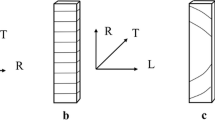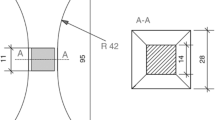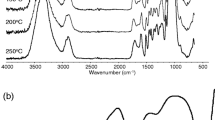Abstract
Elastic and strength properties ( proportional-limit stress (σ prop), Young’s modulus (E), breaking stress (σ max) in static bending parallel to grain in a longitudinal direction), as well as stress relaxation in air-dried condition and water-saturated conditions at seven different constant temperatures and increasing and decreasing temperatures were investigated for wood from Chinese-fir and poplar plantations. The results show that hygrothermal conditions considerably affect these mechanical properties. The higher the moisture content (MC) or temperature, the lower the strength of wood. Further investigation of the effects of constant temperature on stress relaxation indicates that high temperature specimens have low relaxation moduli and high fluidity. In the case of increasing temperature the range of the modulus of relaxation is larger than in the case of a reduction in temperature, while the residual moduli do not show large differences. This is because the modulus at high temperatures decreases more than that at low temperatures. The fluidity of specimens in a state of water desorption increases slowly at the beginning, increases quickly until the MC reaches a n equilibrium moisture content (EMC) and then becomes stable, which is quite different from that in a water-saturated state. Fluidity in a desorption state is much higher than in a water-saturated state. This is probably due to the fact that the former is in an unstable state which can be interpreted as a state with internal strain and has therefore a greater potential to release strain.
Similar content being viewed by others
References
Iida I, Murase K, Kutaka Y. 2002a. Stress relaxation of wood during the elevating and lowering processes of temperature and the set after relaxation. J Wood Sci, 48: 8–13
Iida I, Kudo M, Onizuka J, Yutaka Y, Furuta Y. 2002b. Stress relaxation of wood during the elevating and lowering processes of temperature and the set after relaxation II: consideration of the mechanism and simulation of stress relaxation behavior using a viscoelastic model. J Wood Sci, 48: 119–225
Ishimaru Y, Arai K, Mizutani M, Oshima K, Ikuho I. 2001a. Physical and mechanical properties of wood after moistrue conditioning. J Wood Sci, 47: 185–191
Ishimaru Y, Oshima K, Iida I. 2001b. Changes in the mechanical properties of wood during a period of moisture conditioning. J Wood Sci, 47: 254–261
Kudo M, Iida I, Ishimaru Y, Furuta Y. 2003. The effects of quenching on the mechanical properties of wet wood. Mokuzai Gakkaishi, 49: 253–259 (in Japanese)
Tokumoto M. 1994. Ceep and set of wood ion the non-equilibrium states of moisture. Mokuzai Gakkaishi, 40: 1157–1164 (in J apanese)
Author information
Authors and Affiliations
Corresponding author
Rights and permissions
About this article
Cite this article
Zhao, Yk., Iida, I., Feng, Sh. et al. Viscoelastic properties of wood from Chinese-fir and poplar plantations. For. Stud. China 14, 107–111 (2012). https://doi.org/10.1007/s11632-012-0201-7
Received:
Accepted:
Published:
Issue Date:
DOI: https://doi.org/10.1007/s11632-012-0201-7




